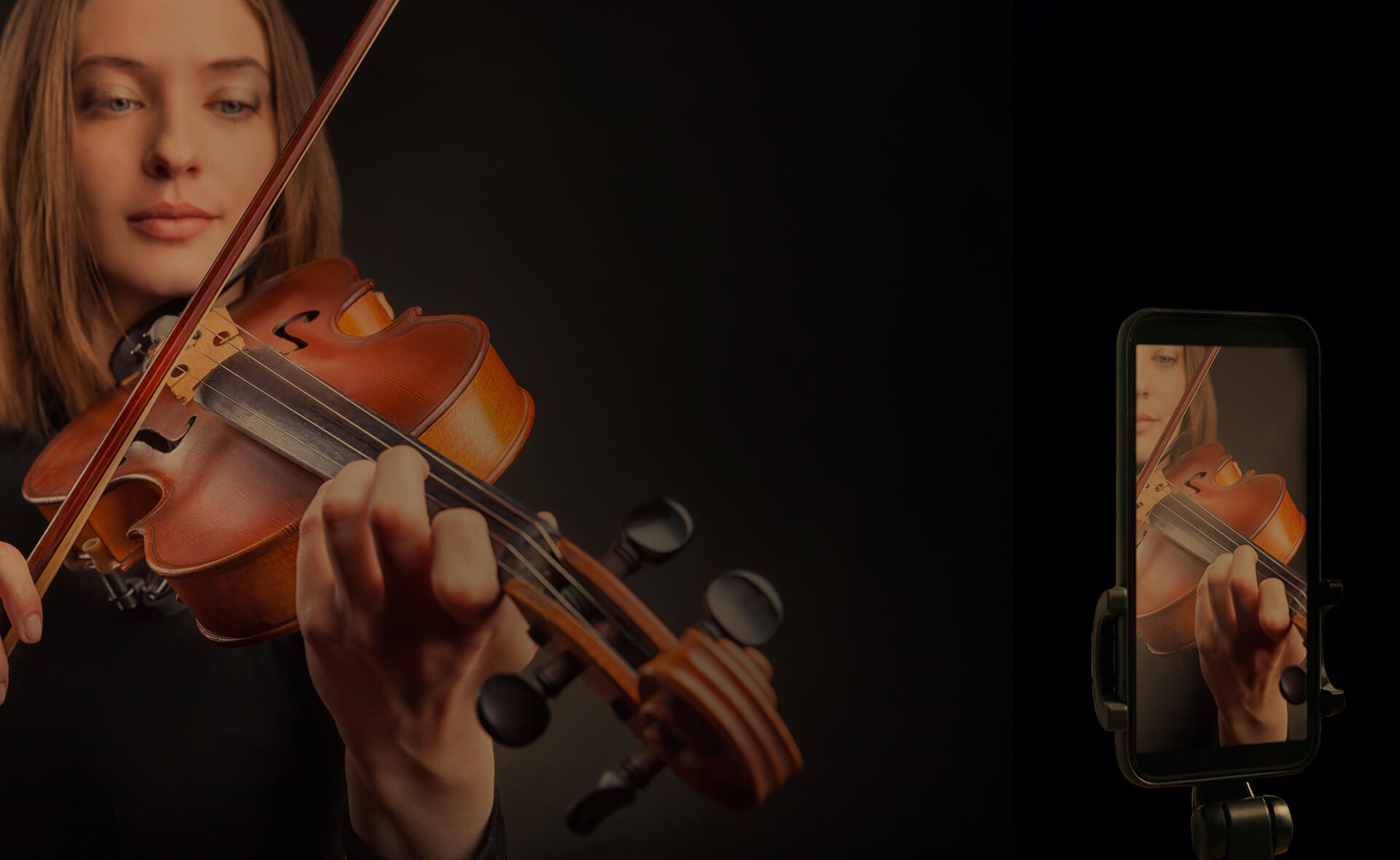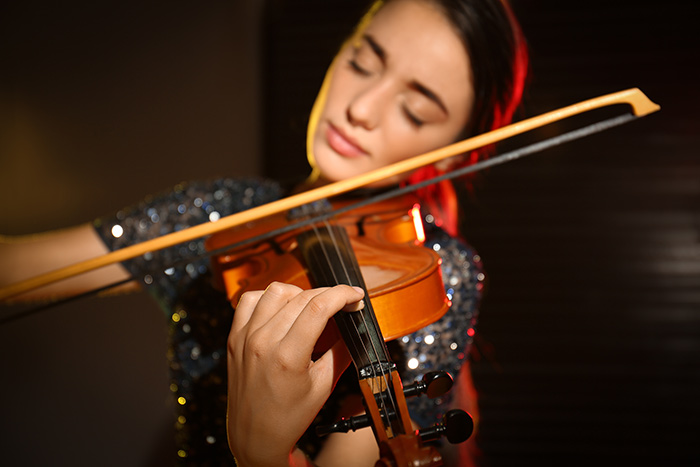Starting to learn the violin is like going on a thrilling musical adventure. But like any journey, it needs planning. If you’re new to the violin, making a practice plan is super important. Let’s dive into a cool plan that’ll lead you through your violin journey, which is full of fun and learning!

Begin with Warm-Ups
Before you begin playing your violin, it’s crucial to prepare your body and instrument for a successful practise session. Start by focusing on your body position: sit or stand comfortably with your back straight and shoulders relaxed. Position the violin securely under your chin, ensuring it feels stable and balanced.
Now, let’s talk warm-ups!
Spend a few minutes gently waking up your muscles and getting your fingers ready for action. Simple finger exercises, such as tapping each finger on your thumb one by one, are excellent for loosening up your fingers!
Engage in gentle stretches to release tension in your arms and hands, allowing smoother movement while playing. Don’t forget to incorporate bowing drills into your warm-up routine as well.
Practising various bowing techniques, from long strokes to short, controlled movements, will help you achieve better control and precision.
Once your body feels limber and your fingers are nimble, it’s time to move on to mastering scales.
Remember, a thorough warm-up sets the stage for a productive practice session. By paying attention to your body position and engaging in effective warm-up exercises, you’ll lay a solid foundation for mastering the violin.
You will also avoid injuries and repetitive strain on your system. Remember, in addition to proper warm-up, consider taking up the Alexander Technique to help you with your posture and overall physical health when it comes to playing the violin!
Mastering Scales
Learning scales on the violin is like learning the alphabet before reading. Start with easy ones like C major and G major, focusing on playing each note correctly and smoothly. As you get better, try different keys and variations.
Scales help you learn where to put your fingers and prepare you for harder music. They’re like the basic tools you need to understand music better.
Once you’ve got scales down, you can tackle more challenging pieces called etudes.
Mastering scales opens up a whole world of musical possibilities and makes you a better violinist overall. So, keep practising those scales—they’re the key to unlocking your full potential on the violin!

Exploring Etudes
Etudes are like musical workouts designed to target specific areas of your violin playing. They’re crafted to help you improve skills like bow control, finger agility, and playing in tune. When choosing etudes, start with ones that match your skill level, ensuring they’re beginner-friendly and manageable.
Incorporate these etudes into your practice routine, focusing on understanding the challenges they present and working through them gradually. You’ll gradually notice improvements in your overall playing ability by dedicating time to mastering etudes.
Think of etudes as stepping stones that lead to mastering actual tunes. As you progress through these exercises, you’ll find yourself better equipped to tackle more complex pieces confidently and precisely.
Playing Tunes
Now, let’s add some fun to your practice sessions by playing actual tunes! Choose a few simple songs or pieces from beginner violin repertoire to work on. Pay close attention to the melody, dynamics, and expression, aiming to breathe life into the music with your playing.
As you practise these tunes, focus on refining your technique even further. Pay attention to details like bowing smoothly, fingering accurately, and producing a beautiful tone. By honing your skills through playing tunes, you’ll not only improve your technique but also develop your musicality and interpretation.
So, pick some tunes you enjoy, and let the music guide you on your journey to becoming a proficient violinist!

Refining Technique
To become a great violinist, focus on perfecting your technique. Spend time practising basic skills like different ways of using your bow (like playing smoothly or with short, bouncy notes), putting your fingers in the right spots on the violin, and smoothly moving between notes.
Good technique isn’t just about hitting the right notes—it’s also about keeping a steady beat and making the music sound expressive.
By practising your technique, you’ll improve at playing on time and expressing yourself through music. It’s like building a solid foundation for your violin playing.
Keep working on your technique, as a great technique will make your life as a violinist so much easier and fruitful!
Embracing Rhythm
Playing with a steady rhythm is crucial in music. Incorporating rhythmic exercises into your practice routine can significantly enhance your sense of timing and groove. To help you maintain consistency and precision, you can try clapping rhythms, tapping your foot, or using a metronome while playing scales, etudes, and songs.
Developing a solid sense of rhythm is crucial for practice and performance. Regularly practising rhythmic exercises will build confidence in your ability to stay on beat and deliver engaging performances that captivate your audience.
So, make rhythmic exercises a regular part of your practice sessions. Practising rhythm will improve your overall musicianship and prepare you to shine on stage with a solid sense of rhythm.

Preparing for Performance
Getting ready to perform, whether it’s for your family or a big show, is an essential part of practising. Choose songs you’re comfortable with and work on them until they’re really good. Focus on remembering the songs, feeling confident on stage, and playing with lots of emotion.
Preparing for performances helps you get better at playing and feel more confident. So, keep practising those songs and show off your skills with passion when you perform!
And finally, after each practice session, take a moment to reflect on your progress.
Reflecting on Progress
At the end of every practice session, take a pause to reflect on how it went. Think about the things you did well, the challenges you faced, and what you could improve for next time.
Writing these thoughts down in a practice journal can be really helpful. It lets you keep track of your progress over time and set goals for your future practice sessions.
So, don’t forget to take a moment to review your practice—it’s a great way to keep getting better at playing the violin!

Wrap-up
By connecting each step of your practice routine, you’ll gradually progress on your musical journey towards mastering the violin.
And if you’re eager to take your violin skills to new heights, why not explore the enriching violin lessons offered at the London Violin Institute?
Immerse yourself in expert guidance and tailored instruction to elevate your musical journey to the next level.








